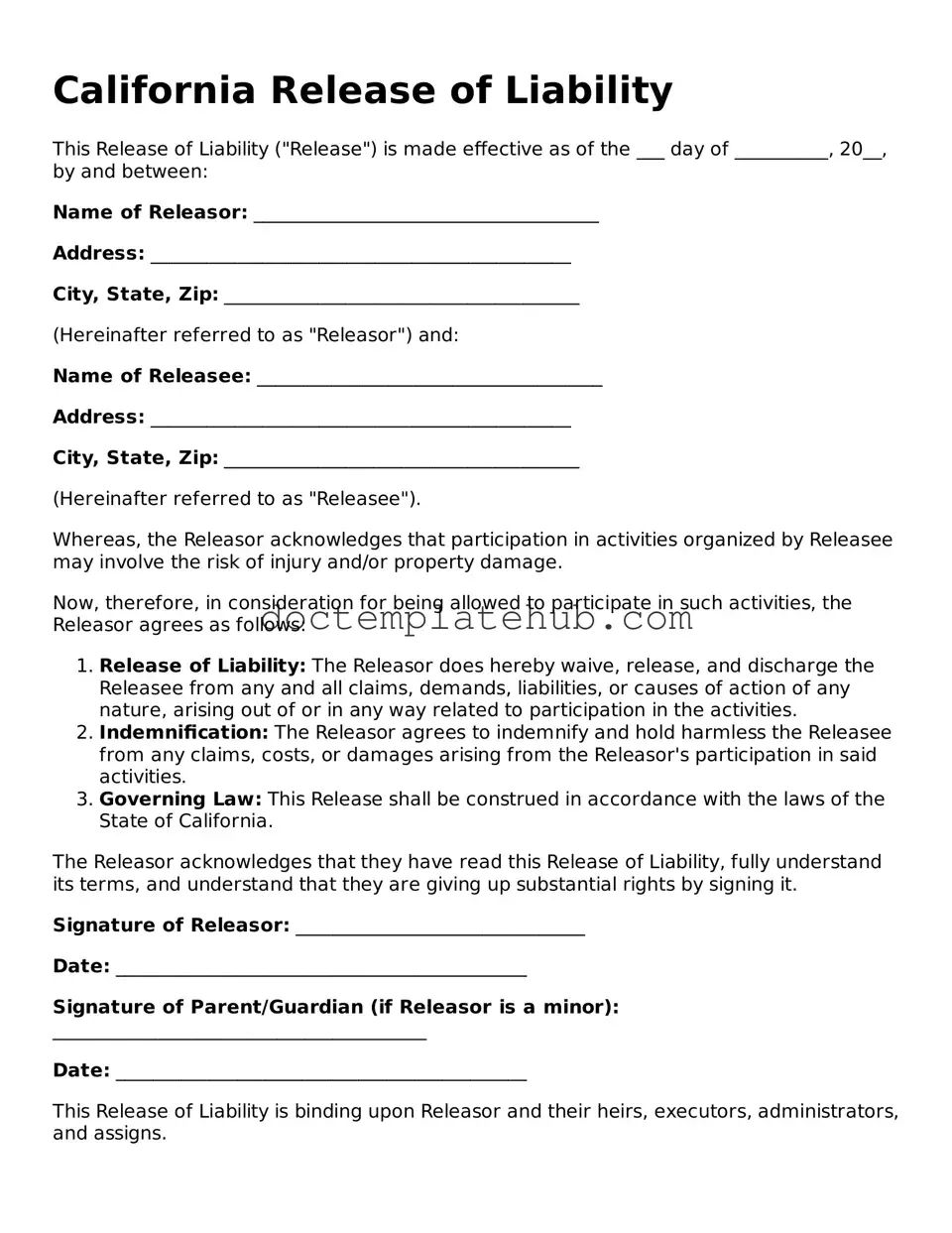What is a California Release of Liability form?
A California Release of Liability form is a legal document that protects an individual or organization from being held liable for injuries or damages that may occur during a specific activity or event. By signing this form, participants acknowledge the risks involved and agree not to hold the organizer responsible for any accidents or injuries that may happen as a result of their participation.
When should I use a Release of Liability form?
This form is commonly used in situations involving physical activities, such as sports events, recreational activities, or any event where there is a risk of injury. If you are organizing an event or activity that could potentially lead to accidents, it is advisable to have participants sign a Release of Liability form to minimize legal risks.
What information should be included in the form?
The form should include key information such as the names of the parties involved, a clear description of the activity, an acknowledgment of the risks, and a statement releasing the organizer from liability. It may also include a section for participants to provide their contact information and a signature line to confirm their agreement.
Is a Release of Liability form enforceable in California?
Yes, a properly drafted Release of Liability form is generally enforceable in California, provided it meets certain legal requirements. The language must be clear and unambiguous, and it should not violate public policy. It is important that participants understand what they are signing, so providing adequate explanation and ensuring voluntary consent are crucial.
Can minors sign a Release of Liability form?
Minors cannot legally sign contracts, including a Release of Liability form. However, a parent or legal guardian can sign on behalf of a minor. This signature serves to acknowledge the risks involved and to release the organizer from liability for any injuries that may occur to the minor during the activity.
What happens if someone is injured despite signing the form?
Even with a signed Release of Liability form, there are circumstances where an injured party may still pursue legal action. If the injury results from gross negligence, willful misconduct, or if the organizer failed to provide a safe environment, the release may not be enforceable. Each case is unique, and legal advice may be necessary to navigate these situations.
